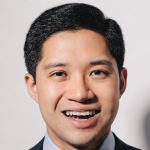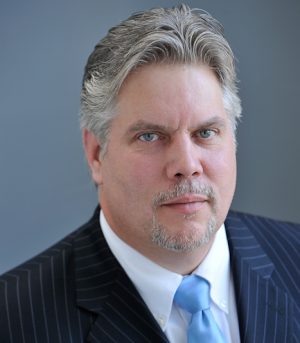As we sit down for Thanksgiving dinner on Thursday, one thing guaranteed to be on the menu almost as much as turkey is impeachment talk. If you’re a lawyer or law student, expect the non-lawyers in the family to turn to you for your expert opinion on this important subject. Whether they’ll agree with or defer to you is another story, of course — but you’ll certainly be asked.
If you’d like to field questions about impeachment in an intelligent and informed way, then I have a book recommendation for you: Impeach: The Case Against Donald Trump, by Neal Katyal. Longtime Above the Law readers know Katyal as the former Acting Solicitor General of the United States, current Hogan Lovells partner and Georgetown law professor, and leading Supreme Court and appellate advocate (with more SCOTUS arguments than any other minority group lawyer in U.S. history). Now he has a new title: Author.
Whether you agree or disagree with Katyal’s bottom line, Impeach is well worth your time: Cogent, clear, comprehensive, and concise. And it’s especially impressive considering that Katyal wrote it in under two weeks, which explains how he’s able to tackle a subject that’s still unfolding in real time.
I spoke with Neal this past Friday about the book, the impeachment process, and other Trump-related topics — such as whether the Supreme Court will tackle the issue of access to Trump’s tax records. Here’s a (lightly edited and condensed) write-up of our conversation.
DL: Before we turn to substance, let’s talk process — how quickly this book came together. You’re writing about developments that took place weeks or even days ago. Can you start by telling us about the genesis of the project?
NK: On October 4, about six weeks ago, I was at dinner in D.C. with friends, including Howard Yoon, a book agent. The month before, I had written, with George Conway, an op-ed about the Ukraine allegations for the Washington Post that said, in essence, “This is a big deal — and impeachment proceedings will happen.” I got lots of pushback on that prediction, but by October 3, it was clear I was right.
With the Mueller investigation, I did some television — even though television is not my thing, as a Supreme Court lawyer — in the hope that it could change the debate. It didn’t quite work out that way. So after the Ukraine news broke, I wondered: What could I do this time around that might be more effective?
Howard said, “You won’t want to hear this, but you should really write a book.” I told him, no way, it’s October 4, impeachment proceedings will begin in a month. But Howard insisted I could do it.
Lying in bed that night, I thought to myself: “I can totally do this.” I woke up and started to bang out a proposal. I needed a collaborator, so the next day I called Sam Koppelman and asked if he’d work with me. He said yes. I knew him because earlier this year, I got a call from Dean Gerken at our alma mater [Yale Law School], asking me to give the commencement address. I was, needless to say, freaked out. I showed a draft of the speech to my good friend Brian Koppelman, who suggested that I show it to his son Sam. Sam worked with me to revise that speech, and he did a beautiful job. He was the first and only call I made to seek out a collaborator.
DL: So what was your timeframe, in terms of how quickly you wrote the proposal, how quickly you wrote the book, and how quickly it went to press?
NK: The dinner was on Friday, October 4. We sent out the proposal early the following week, around Monday the 7th or Tuesday the 8th, and said we’d pick a publisher based on who could do it most quickly. Houghton said they could do it very fast, really wanted to publish it, and could commit to having it on shelves by November 26, so we went with them.
We promised them the manuscript by October 25 and actually submitted it within nine days, a week ahead of the October 25 deadline. It’s on trucks right now, being delivered to bookstores.
DL: Conveniently right before Thanksgiving.
NK: Thanksgiving is the traditional time for sitting down with extended family, many of whom you might not agree with politically, and talking about fundamental questions. On my website, you can download Thanksgiving “impeachmats” — placements inspired by the book that are designed to guide civil discussion about impeachment.

Neal Katyal (courtesy of the author)
DL: You make a strong argument in favor of impeachment as opposed to waiting for the 2020 election. But are you at all concerned that a failed impeachment could actually strengthen Trump’s reelection prospects?
NK: I can see arguments both ways on the politics. The reason I wrote this book is because in this country, both the left and the right have cared too much about politics and not enough about our fundamental values. If you told me that impeachment was guaranteed to fail and to reelect Trump, I would say we still have to do it — even though I view Trump as an existential threat to our democracy. We have to stand for something. This is about who we are as a country.
DL: And are you worried about the possible weaponization of impeachment, such that we’ll go through “impeachment” pretty much every time the White House and Congress are controlled by different parties?
NK: Trump’s conduct is the core of what impeachment is about. It doesn’t matter where you’re coming from politically. The central argument of the book is to ask readers to think like law students, and reverse the identity of the parties. Republicans should ask themselves: What if Obama did what Trump is accused of doing? If you don’t impeach for this, you’ve read these clauses out of the Constitution altogether.
I do worry about impeachment becoming a regular event. But this is why the constitutional standard, “high crimes and misdemeanors,” is as high as it is. It’s not for maladministration or policies you don’t like.
So, for example, I’m as distraught as anyone in the country about Trump’s policies regarding child separation, but I don’t think they are an impeachable offense. It might be a grotesque violation of human rights, but it is not impeachable conduct.
For lawyers, think about fiduciary duty, putting your client’s interests ahead of your own personal ones. That’s how the Founders thought about the presidency: That the president has a fiduciary duty to put the people first. When the president violates that duty by trying to get personal help for his reelection from a foreign government, that’s core impeachment.
DL: Your book is prescriptive and normative; let’s turn to the predictive. How do you think this will all shake out? You point out that most Republicans and a sizable portion of the public opposed the impeachment of Nixon for a long time, and then his support collapsed in a matter of weeks. But do you think that can happen today, a much more polarized time?
NK: I do think it can happen today. Pundits consistently underestimate the American people and members of Congress.
I’m sick of the soft bigotry of low expectations when it comes to the American people. There have been so many times in our history when people said something couldn’t be done, and it got done. So I am optimistic that Trump will end up leaving office, whether through resignation or a formal vote.
DL: One of your proposed reforms is to pass a federal law requiring presidents and presidential candidates to release their tax returns before the election. The issue of access to Trump’s tax records — albeit in a different context, in terms of requests for them by a House committee and by Manhattan prosecutors — has now been decided by two circuit courts.
You’re an expert on the Supreme Court as well as impeachment. Any prediction as to whether the Court will agree to decide this issue and, if so, what the Court will rule?
NK: I think the Court is perhaps unlikely to hear these cases. When the president asks the Court to hear a case, generally they do — but there are a few things going on here that make it less likely than usual.
We’re in an election year, and this president hasn’t hesitated to declare war on the Court when he loses. So there will be some inclination among the justices to say, “Let’s not get into this.”
The arguments by Trump are just frankly bad, the court of appeals decisions are both narrow, and they both pretty much demolish the Trump arguments. So I could see the justices basically saying they are comfortable with where things wound up.
DL: Anything to share in closing, about the book or about impeachment?
NK: Impeachment is a hybrid animal, rooted in both politics and law. So much of the daily discourse is about politics; I wrote the book to focus on law.
We need to put the law back into impeachment discussions. We need to reflect on what it would do to our government if our commander in chief can go and get secret help for his reelection campaign from a foreign government. It’s not about whether this helps Pelosi or Schiff or Buttigieg, it’s about what this means for our country. This is why I hope people read the book.
DL: And read it they shall. Congrats again on the book, Neal, and thanks for taking the time to chat!
Impeach: The Case Against Donald Trump [Amazon (affiliate link)]
 David Lat, the founding editor of Above the Law, is a writer, speaker, and legal recruiter at Lateral Link, where he is a managing director in the New York office. David’s book, Supreme Ambitions: A Novel (2014), was described by the New York Times as “the most buzzed-about novel of the year” among legal elites. David previously worked as a federal prosecutor, a litigation associate at Wachtell Lipton, and a law clerk to Judge Diarmuid F. O’Scannlain of the U.S. Court of Appeals for the Ninth Circuit. You can connect with David on Twitter (@DavidLat), LinkedIn, and Facebook, and you can reach him by email at dlat@laterallink.com.
David Lat, the founding editor of Above the Law, is a writer, speaker, and legal recruiter at Lateral Link, where he is a managing director in the New York office. David’s book, Supreme Ambitions: A Novel (2014), was described by the New York Times as “the most buzzed-about novel of the year” among legal elites. David previously worked as a federal prosecutor, a litigation associate at Wachtell Lipton, and a law clerk to Judge Diarmuid F. O’Scannlain of the U.S. Court of Appeals for the Ninth Circuit. You can connect with David on Twitter (@DavidLat), LinkedIn, and Facebook, and you can reach him by email at dlat@laterallink.com.



















